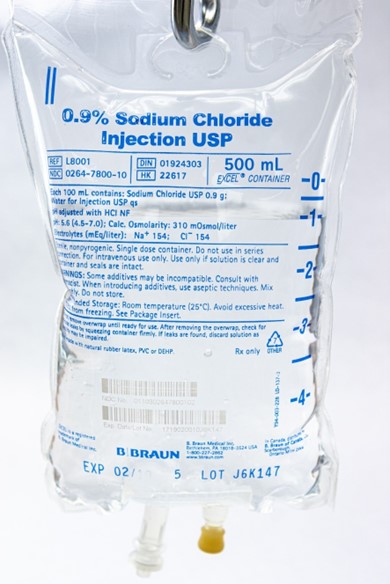A client who is having burn debridement states, "You are the worst nurse I have ever seen. All you do is hurt me." Which of the following responses should the nurse make?
"That's a hurtful thing to say."
"Why would you say such a thing?"
"Well, that's your opinion."
"Tell me more about that."
The Correct Answer is D
Choice A Reason: This choice is incorrect because it reflects the nurse's feelings rather than focusing on the client's needs. Saying "That's a hurtful thing to say" may make the client feel guilty or defensive, and it does not address the underlying cause of the client's anger or frustration.
Choice B Reason: This choice is incorrect because it sounds accusatory and confrontational rather than empathetic and supportive. Asking "Why would you say such a thing?" may make the client feel judged or criticized, and it does not explore the client's feelings or concerns.
Choice C Reason: This choice is incorrect because it dismisses the client's feelings rather than acknowledging them. Saying "Well, that's your opinion" may make the client feel ignored or invalidated, and it does not show respect or compassion for the client.
Choice D Reason: This choice is correct because it invites the client to express their feelings and concerns rather than shutting them down. Saying "Tell me more about that" may make the client feel heard and understood, and it may help to identify the source of their anger or frustration. The nurse can then use therapeutic communication skills such as active listening, reflecting, clarifying, or validating to establish rapport and trust with the client.
Nursing Test Bank
Naxlex Comprehensive Predictor Exams
Related Questions
Correct Answer is B
Explanation
Choice A Reason: This choice is incorrect because oral hypoglycemic medications are not effective for treating DKA. Oral hypoglycemic medications are drugs that lower the blood glucose level by stimulating insulin secretion or increasing insulin sensitivity. They may be used for clients who have type 2 diabetes mellitus, but they do not work for clients who have type 1 diabetes mellitus or DKA.
Choice B Reason: This choice is correct because 0.9% sodium chloride IV bolus is an effective treatment for DKA. 0.9% sodium chloride is an isotonic solution that contains the same concentration of solutes as blood plasma. It may be used for clients who have fluid loss, dehydration, or shock. In DKA, the body breaks down fat for energy due to insulin deficiency or resistance, resulting in high levels of ketones and acids in the blood. This causes osmotic diuresis, dehydration, electrolyte imbalance, and metabolic acidosis. Therefore, administering 0.9% sodium chloride IV bolus can help to restore fluid volume and correct electrolyte imbalance.
Choice C Reason: This choice is incorrect because dextrose 5% in 0.45% sodium chloride is not indicated for treating DKA. Dextrose 5% in 0.45% sodium chloride is a hypertonic solution that contains more solutes than blood plasma. It may be used for clients who have hyponatremia, cerebral edema, or malnutrition, but it can worsen hyperglycemia and osmotic diuresis in clients who have DKA.
Choice D Reason: This choice is incorrect because glucocorticoid medications are not indicated for treating DKA. Glucocorticoid medications are drugs that mimic the effects of cortisol, a hormone that regulates stress response and inflammation. They may be used for clients who have allergic reactions, asthma, or autoimmune diseases, but they can increase blood glucose levels and inhibit insulin action in clients who have DKA.

Correct Answer is A
Explanation
Choice A Reason: Packed RBCs are indicated for clients who have hypovolemic shock due to blood loss, as they increase the oxygen-carrying capacity of the blood and restore the blood volume.
Choice B Reason: Cryoprecipitates are indicated for clients who have hemophilia or von Willebrand disease, as they contain clotting factors that help stop bleeding.
Choice C Reason: Albumin is indicated for clients who have hypovolemic shock due to fluid loss, such as from burns or ascites, as it increases the plasma oncotic pressure and draws fluid into the vascular space.
Choice D Reason: Platelets are indicated for clients who have thrombocytopenia or platelet dysfunction, as they help prevent or control bleeding.
Whether you are a student looking to ace your exams or a practicing nurse seeking to enhance your expertise , our nursing education contents will empower you with the confidence and competence to make a difference in the lives of patients and become a respected leader in the healthcare field.
Visit Naxlex, invest in your future and unlock endless possibilities with our unparalleled nursing education contents today
Report Wrong Answer on the Current Question
Do you disagree with the answer? If yes, what is your expected answer? Explain.
Kindly be descriptive with the issue you are facing.
